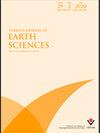Overview on GPlates: focus on plate reconstruction
IF 1.1
4区 地球科学
Q3 GEOSCIENCES, MULTIDISCIPLINARY
引用次数: 1
Abstract
extinct spreading Abstract: Plate tectonic reconstructions have been employed in geosciences since 1970s, in the context of hydrocarbon exploration, regional geology and paleobiology. Such studies have given valuable inputs for climate and geodynamic computations, present-day mantle structure, models of plate motion, and the interpretation of the drift of hotspots, true polar wander (TPW), sea level and stratigraphic signals. However, geodynamic models generated in the past by incorporating global plate tectonic reconstructions have limitations. To overcome this, GPlates software brings forward a new era of interactive plate tectonic reconstruction software integrated with GIS databases that incorporates a wide variety of geological and geophysical data. Besides modelling tectonic and crustal evolution, GPlates has also been used in visualizing paleogeography and paleobathymetry, in understanding deep carbon cycle, subduction zone initiation, mantle evolution, investigating earthquakes and predicting future supercontinents. the software has been widely used in hydrocarbon exploration along the passive conjugate margins such as from the margins of South America and Africa and has provided promising results in acquiring new and more reliable prospecting criteria for petroleum systems. Additionally, it has become an integral tool for paleolatitude calculations, modelling of paleoclimate and paleoenvironment. This article reviews key plate reconstructions that have been carried out using GPlates, the typical constraints and the set ofGPlates概述:重点研究板块重建
摘要:自20世纪70年代以来,板块构造重建在油气勘探、区域地质和古生物学背景下被应用于地球科学。这些研究为气候和地球动力学计算、现今地幔结构、板块运动模型、热点漂移、真极漂移(TPW)、海平面和地层信号的解释提供了有价值的输入。然而,过去通过整合全球板块构造重建而产生的地球动力学模型存在局限性。为了克服这一问题,GPlates软件提出了一个与GIS数据库集成的交互式板块构造重建软件的新时代,该软件包含了各种地质和地球物理数据。除了模拟构造和地壳演化,GPlates还被用于可视化古地理和古测深,了解深层碳循环,俯冲带起始,地幔演化,地震调查和预测未来的超级大陆。该软件已广泛应用于南美和非洲等被动共轭边缘的油气勘探,并在获得新的、更可靠的含油气系统勘探标准方面取得了可喜的成果。此外,它已成为古纬度计算、古气候和古环境模拟的重要工具。本文综述了利用GPlates进行的关键板块重建、典型约束条件和集合
本文章由计算机程序翻译,如有差异,请以英文原文为准。
求助全文
约1分钟内获得全文
求助全文
来源期刊

Turkish Journal of Earth Sciences
地学-地球科学综合
CiteScore
2.40
自引率
10.00%
发文量
6
审稿时长
6 months
期刊介绍:
The Turkish Journal of Earth Sciences is published electronically 6 times a year by the Scientific and Technological Research
Council of Turkey (TÜBİTAK). It is an international English-language journal for the publication of significant original recent
research in a wide spectrum of topics in the earth sciences, such as geology, structural geology, tectonics, sedimentology,
geochemistry, geochronology, paleontology, igneous and metamorphic petrology, mineralogy, biostratigraphy, geophysics,
geomorphology, paleoecology and oceanography, and mineral deposits. Contribution is open to researchers of all nationalities.
 求助内容:
求助内容: 应助结果提醒方式:
应助结果提醒方式:


